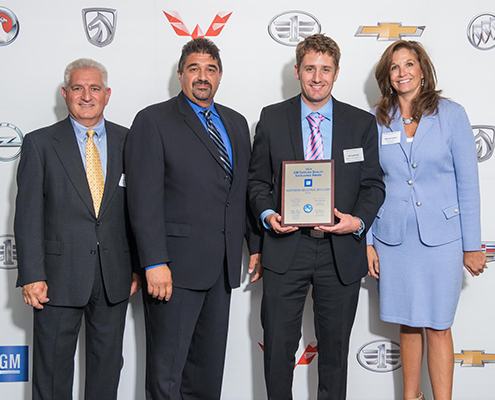Electric Motor Efficiency: Why Proper Shim Selection Matters
Shims represent critical components for electric motor efficiency and reliability, despite their simple appearance. Electric motors consume between 43 and 46 percent of global electricity. These motors account for 20 percent of all energy used in the United States and 59 percent of all electricity generated. Industrial systems show even higher consumption rates, with motors using 78 percent of electrical energy.
Motor downtime creates substantial financial impact across industries. Costs range from $30,000 per hour in food processing to $200,000 per hour in automotive manufacturing. Properly implemented maintenance programs reduce energy consumption in plants by 10-14 percent. Yet maintenance professionals frequently overlook proper shim selection and its direct impact on motor efficiency and reliability.
Shims get treated as afterthoughts during motor installation and maintenance processes. These components create proper alignment, prevent vibration, and ensure optimal air gap between rotor and stator components. Motors with improper shimming experience increased stress, accelerated bearing wear, and significant efficiency losses. Studies show that following best practices in motor maintenance improves efficiency by approximately 0.2 percent. This improvement translates to substantial energy and cost savings across multiple motors in industrial settings.
Shim selection requires immediate attention for electric motor efficiency optimization. Common mistakes in shim selection and installation create measurable problems. Shims impact key motor fault zones through alignment issues. Reliability improves through shim quality control implementation. Effective monitoring and troubleshooting methods identify shim-related issues before costly downtime or efficiency losses occur.
Shim selection & installation mistakes in electric motors
Shim selection mistakes consistently undermine motor performance across industrial applications. Maintenance teams make recurring errors when selecting and installing shims that directly impact efficiency and reliability.
Random or mixed shim materials create problems
Technicians often grab available materials without considering consistency requirements. Random metal scraps and mixed shim types lead to inconsistent performance and premature failure. A36 Steel and 302/304 Stainless Steel represent suitable options for motor applications. Stainless steel shims provide superior compression resistance and durability compared to other materials.
Reusing old, bent, or corrupted shims compromises precision and creates ongoing alignment issues. These degraded components function as variable springs rather than solid supports. Pre-cut stainless steel shims provide flatness consistency and prevent corrosion. Use new, properly specified shims for optimal motor efficiency results.
Thermal expansion properties require consideration
Neglecting thermal growth considerations creates significant alignment problems. Different materials expand at different rates during operation. Steel expands differently than aluminum or cast iron. Motors operate at elevated temperatures, causing differential expansion that shifts alignment between cold installation and hot operation.
Uneven temperature distribution throughout motor assemblies causes some parts to expand more than others, creating angular misalignment. Motors aligned perfectly at installation shift out of alignment once operational temperatures are reached. This leads to excessive vibration, premature wear, and equipment failure. Account for these thermal properties during initial installation.
Surface cleanliness and flatness affect precision
Surface preparation directly impacts alignment accuracy. Laser shaft alignment systems provide measuring accuracy below 0.01mm. Rust, surface contamination, and paint thickness (0.1mm – 0.2mm) significantly impact alignment precision under these conditions.
Remove paint from mounting pads and motor feet completely. Clean surfaces back to bare metal and remove all burrs. Each shim should cover at least 80% of the foot area. Try to use no more than five shims under any foot to prevent spring action and dirt ingress problems.
Shim Selection Impact on Electric Motor Fault Zones
Improper shim selection creates cascade effects across motor systems. These effects extend beyond mechanical alignment into three critical fault zones where shims directly influence motor performance.
Power circuit stress from misalignment
Misaligned shafts from improper shimming create uneven electrical loads that stress power circuits. Small percentage voltage unbalance results in much larger percentage current unbalance, causing temperature rises beyond normal operating parameters. Motors require derating to prevent damage, as operation above 5 percent voltage unbalance is not recommended. Poor shimming creates mechanical misalignment that transfers to electrical imbalance. Motors work harder while producing less output. This electrical strain manifests as excessive heat generation in motor windings, creating thermal stress points that degrade insulation.
Rotor and stator imbalance due to uneven base
Motor reliability depends on proper base support. Vibration levels increase noticeably if one or more bulkheads lack proper shim support under the motor base. Loosening or tightening base bolts that changes vibration levels indicates improper shimming. Uneven shim placement creates soft foot conditions, particularly evident when vibration is higher in the vertical plane. This condition results in eccentric air gaps, identified by high axial vibration and predominant twice-line-frequency vibration patterns. Motors with twisted frames from poor shimming exhibit irregular air gaps that appear as vibration at twice line frequency.
Air gap inconsistencies and torque loss
Air gap anomalies from improper shimming lead to various types of eccentricity that may result in mechanical rubbing between stator and rotor components. Improved precision in modern motors means air gaps have never been smaller, creating greater opportunities for air gap issues to become severe. Shim-related air gap inconsistencies cause eccentricity problems where the rotor misaligns to the magnetic center of the stator. These inconsistencies directly affect torque production and efficiency while generating abnormal noise and increasing operational temperatures. Regular monitoring of air gap consistency through current signature analysis helps detect these shimming-related issues before catastrophic failure occurs.
Shim quality control reliability standards in Electric Motors
Quality control for shims supports reliable motor operation. Systematic verification processes prevent costly downtime and efficiency losses beyond material selection alone.
Test shim fit during installation procedures
Measure each shim stack with precision tools rather than trusting marked thickness values. Shims 0.020″ and smaller (typically ground stock) maintain tolerance ranges around +/- 0.0005″, while thicker shims (0.025″ and above from rolled stock) vary by +/- 0.005″. These discrepancies become critical when aligning to tight tolerances. Pre-cut stainless steel shims speed up alignment processes and provide more accurate results.
Set shim material and thickness standards
Standardization provides the cornerstone of reliable motor operation. Most manufacturers specify stainless steel (EN 10088-2 – X2CrNi 18-9/AISI 304) for durability and dimensional stability. Each shim should cover at least 80% of the foot’s area. Please use no more than 4-5 shims per foot. Try to sandwich thinner shims between thicker ones for protection.
Integrate shim checks into motor QC programs
Quality control encompasses material inspection, dimensional accuracy verification, strength testing, and durability assessment. Measure existing shim stacks before disassembly to preserve critical dimensional data. Try to use slotted stainless steel shims in varying thicknesses (typically 0.05 to 1.0mm) for fine adjustments according to laser alignment system values.
Shim monitoring & troubleshooting for electric motor efficiency
Early detection of shimming issues prevents costly motor failures. Try to implement ongoing monitoring practices to maintain optimal motor performance throughout operational life.
Vibration analysis procedures for misalignment detection
Use vibration analysis to identify shim-related problems without motor disassembly. Shaft misalignment produces vibration frequencies at even multiples of rotational speed. Try to monitor bearings nearest to coupling points where these distinctive vibration signatures appear most prominently. For motors with soft foot conditions from improper shimming, observe elevated peaks at twice the electrical line frequency. These peaks should not exceed 0.1 in/s peak for motors already in service. Please use vibration analyzers with streaming capabilities to perform running soft foot checks. Try loosening individual feet one at a time while monitoring vibration spectra to pinpoint problematic shim installations.
Motor circuit analysis implementation for phase imbalance
Implement Motor Circuit Analysis to identify electrical imbalances from mechanical misalignment caused by improper shimming. This de-energized test measures resistance, inductance, capacitance, impedance, and phase balance to detect turn-to-turn winding faults and phase imbalance. Try to use MCA for identifying potential problems before catastrophic failure, particularly for detecting shim-related issues that create uneven stator-rotor spacing. Please conduct testing quarterly in the first year to establish baselines, then every six months thereafter.
Re-shimming versus Electric Motor Base Replacement
Make decisions between re-shimming and complete base replacement based on misalignment severity and type. Try re-shimming for minor soft foot conditions showing movement between 0.002-0.003 inches when loosening feet. Please consider comprehensive solutions for severely distorted bases producing over 0.2 inch displacement. Try to address shimming issues before they escalate into phase imbalance problems. Proper shimming corrections can reduce vibration to acceptable levels while restoring efficiency.
Electric Motor Shim Manufacturing
Maintenance professionals frequently underestimate shim importance during motor installation and service procedures. These components directly affect motor efficiency, reliability, and operational costs across industrial facilities.
Quality control standards for shim selection prevent costly downtime and efficiency losses. Measure each shim stack with precision tools rather than trusting marked thickness values. Use stainless steel shims covering at least 80 percent of motor foot area while limiting stacks to no more than five shims under any foot. Please verify shim fit during installation using systematic measurement practices.
Monitoring programs detect shim-related issues before catastrophic failure occurs. Implement vibration analysis to identify misalignment problems without motor disassembly. Look for distinctive vibration signatures at even multiples of rotational speed and elevated peaks at twice electrical line frequency. Try to establish Motor Circuit Analysis testing quarterly during the first year, then every six months thereafter.
Surface preparation requirements demand attention to detail. Remove paint from mounting pads and motor feet, clean back to bare metal, and remove burrs before shim installation. Factors such as rust, surface contamination, and paint thickness significantly impact alignment precision when using laser shaft alignment systems with measuring accuracy below 0.01mm.
Thermal expansion properties affect long-term alignment stability. Different materials expand at different rates, creating alignment shifts between cold installation and hot operation. Account for these thermal properties during shim selection to prevent motors from shifting out of alignment once operational temperatures are reached.
Re-shim motors when soft foot conditions show movement between 0.002-0.003 inches when loosening feet. Replace motor bases when severely distorted bases produce over 0.2 inch displacement. Address shimming issues before they escalate into phase imbalance problems, as proper corrections can reduce vibration to acceptable levels while restoring efficiency.
Try to integrate shim checks into regular motor maintenance programs. This systematic approach encompasses material inspection, dimensional accuracy verification, strength testing, and durability assessment. Measure existing shim stacks before disassembly to preserve critical dimensional data for precision applications.
Please standardize on stainless steel shims (EN 10088-2 – X2CrNi 18-9/AISI 304) for durability and dimensional stability. Use pre-cut stainless steel shims to speed alignment processes and assure accurate results. For precision applications, select slotted stainless steel shims in varying thicknesses (typically 0.05 to 1.0mm) to enable fine adjustments according to laser alignment system values.
Motor reliability depends on consistent attention to shimming details. Proper shim selection and installation practices deliver measurable benefits through reduced energy consumption, minimized downtime, and extended equipment life. Make shim quality control a standard part of your motor maintenance procedures.
Electric Motor Assembly Shim Manufacturer
Northern Industrial Manufacturing is the electric motor market’s premier manufacturer of shims. With a reputation for the closest tolerances, highest product quality, short lead times, process innovations, and technical prowess – we can meet your electric motor assembly manufacturing needs, while exceeding your expectations and delivering your parts on time and on budget.
Shim Manufacturer Electric Motor Assembly: 586.468.2790
Thank you for visiting our blog where we keep you updated on the latest News and Events in automotive manufacturing!
Please check back often to learn what is going on with Northern Industrial Manufacturing, in the world of precision thrust washers, selective shims, and spacers.




